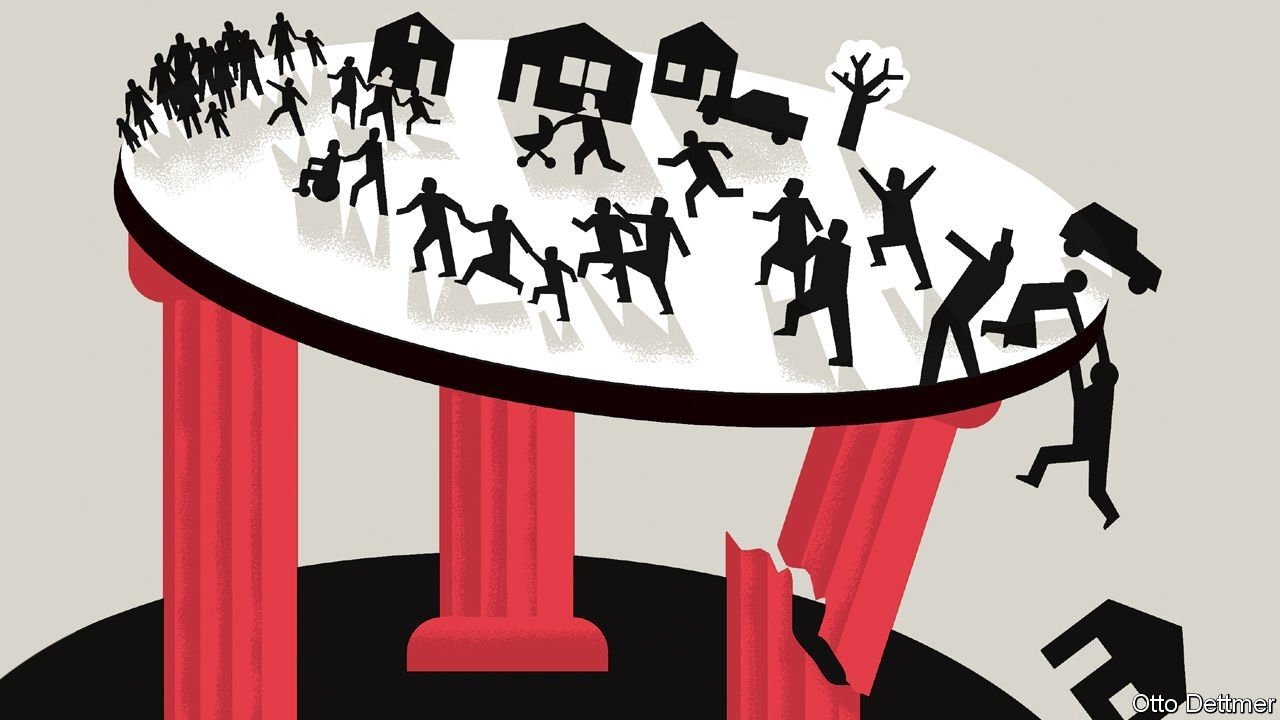BTC—In Search of New Foundations
In 2019, Dr. Rajan published his new book - The Third Pillar. In the book, he argues how the Markets and the State are leaving the Community behind. The book is divided into three sections: How the Pillars Emerged, Imbalance & Restoring the Balance. We can get a quick summary here of the three pillars in Dr. Rajan’s March 2019 talk here. For the sake of this post, I focus on the first two parts since the third part is more future-looking. Some of my key takeaways were:
From Part-I: How the Pillars Emerged
- Mechanism: Community exerts control over the State through democratic oversight and control over the Markets through norms and values.
- Popular will: The reason why capitalism has worked so well is that democracy has helped it work. When capitalism works for many, many support capitalism.
From Part-II: Imbalance
- Growing Costs of Social Security: States made substantial promises of social security to their populations during the good/peaceful times. These commitments were made by prosperous, confident societies based on projects of continuing strong growth.
- Growth in Inequality: Technological Progress or ICT revolution has amplified human capabilities. Neither traditionally disadvantaged communities nor communities in the semirural areas have been able to take advantage of the growth resulting from liberalized economy/ technological progress. This has led to increasing amounts of inequality.
- Loss of Trust: Far too many people now distrust the elite. The policies of openness that served the world well after the Second World War are now being questioned, and it is hard for mainstream politicians to explain in simple words why they are still relevant when confronted with simplistic but more direct arguments of the populist. The value of post-war trust enjoyed by technocrats was that they did not have to spell out these arguments to the wider public; they were generally trusted to what was right. Now they are not.

Around the time I read this book (Feb-March 2019), there was an increase in liquidity in the Indian debt markets. As someone managing private debt funds, I observed this in the form of marked contraction in credit spreads (difference between the rate of interest charged to a corporate borrower as against that charged to a risk-free borrower.) Piqued by curiosity, I began to research more about debt markets and stumbled on Principles For Navigating Big Debt Crises by Ray Dalio. It’s an eye-opening book where the author lays down a template for big debt cycles. For the sake of this post, I’d like to mention the following section from the book (page 26) that talks about ‘Managing Depressions’:
(Typically debt crises occur because debt and debt service costs rise faster than the incomes that are needed to service them, causing a deleveraging. When deleveraging occurs in the later stages of a debt cycle, there are only a limited number of levers available to policymakers.)
The policies that reduce debt burdens fall under four broad categories: (1) austerity, (2) debt defaults/restructurings, (3) debt monetization/money printing, and (4) wealth transfers (i.e., from the haves to the have-nots). By using these kinds of levers well, policymakers can mitigate the worst effects of a Depression and manage both the failed lenders and borrowers and the economic conditions. But it’s important to recognize that each of these levers has different impacts on the economy and creditworthiness. The key is to get the mix right so that deflationary and depressive forces are balanced with inflationary and stimulative ones.
Policymakers typically get the mix between austerity, money printing, and redistribution wrong initially. Taxpayers are understandably angry at the debtors and at the financial institutions whose excesses caused the debt crisis and don’t want the government (i.e., their taxes) to bail them out. And policymakers justifiably believe that debt excesses will happen again if lenders and borrowers don’t suffer the downsides of their actions (which is called the “moral hazard” problem). For all these reasons, policymakers are usually reluctant and slow to provide government supports, and the debt contraction and the agony it produces increase quickly. But the longer they wait to apply stimulative remedies to the mix, the uglier the deleveraging becomes. Eventually, they choose to provide a lot of guarantees, print a lot of money, and monetize a lot of debt, which lifts the economy into a reflationary deleveraging. If they do these things and get the mix right quickly, the depression is much more likely to be relatively short-lived (like the short period of “depression” following the US crisis in 2008). If they don’t, the depression is usually prolonged (like the Great Depression in the 1930s or Japan’s “lost decade” following its bubble in the late 1980s).
Separately, this 2-min scene from a 2013 conversation between Garry Kasparov and Peter Thiel ends up with a similar conclusion: “… the only way out is to work with sound money. If the money doesn’t have any value, the whole system doesn’t work.” more
These are snapshots of broader arguments made in three different contexts that somehow hint at the same thing: We have a lot of complex problems in our society, and we are printing money to find our way out of it. I don’t know how this will all play out, but I think the pandemic just accelerated the socioeconomic forces that were already at play:
Enter Bitcoin (BTC).
BTC whitepaper was released shortly after the 2007-08 financial crisis. Perhaps, Satoshi Nakamoto saw it coming that it’s difficult to stop the printing machine (probably because of the incentives of different stakeholders). BTC, therefore, ingeniously aligns the incentives of various stakeholders in a decentralized way to keep itself running. The network is robust in its unstructured simplicity. Nodes work all at once with little coordination. They do not need to be identified since messages are not routed to any particular place and only need to be delivered on a best-effort basis. Nodes can leave and rejoin the network at will, accepting the proof-of-work chain as proof of what happened while they were gone.
The proof-of-work mechanism acts as a signal to people amidst all the noise. For qualities that are not directly observable, humans rely on signals. A signal is reliable when most instances of it are honest; it is unreliable when it is sometimes honest, but sometimes not. The intention of an honest signal is to indicate a particular quality, one that does indeed exist within the signaler or the environment. A deceptive signal is the opposite: its intention is to indicate the existence of a quality that the signaler or environment does not actually have.
For communication to occur, for signals to maintain their significance, something must limit the rate of deception. This is the core question of signaling theory: what keeps signals reliable? The answer is cost: a signal will be reliable if it is beneficial to produce truthfully, yet prohibitively costly to produce falsely. These costs can be inherent to the signal, or they can be imposed by society (source: Signals, Cues & Meaning.) It can be argued that the price of BTC is essentially a ‘signal’ of the extent of money that is being/will be printed out of thin air. And, this signal is potent because of its mimetic characteristics.
BTC is the ultimate meme- it symbolizes different things to different people. For some, it is a speculative asset. For some, it’s a vote for change and a way to signal one’s distrust with the current system. For some, it represents sound foundations to rebuild a better system. For others, it’s just a way to have some fun. In any case, the idea is mimetic and the meme is going mainstream. It has now found a place in everyday conversations.
Regulators ask, ‘how do we prevent cryptocurrencies from gaining mainstream adoption?’ But, that’s akin to asking, ‘how do we fight the symptom rather than the disease?’ Perhaps, the right questions to ask would be “How do we adapt or change our system so that it works for the many?” or “How do we solve our problems without the State spending?” or “How do we accomplish More with Less?” For some time now, these questions have not been asked widely. Printing money and spending has provided us with an easy way out to kick the can down the road and forget our problems. Now, there’s an external signal to hold us accountable and force us to ask critical questions.
Ray Dalio raises some important questions in the last chapter of his book Principles for Dealing with the Changing World Order. To answer these complex questions, we need to have an open dialogue about what’s important to us as a society. It is difficult to have such conversations when we are in echo chambers and aren’t open to differing opinions. We silence independent voices with innovative ideas that can potentially solve some of our complex problems. BTC may just force us to listen to new ideas. Our society needs some imagination to rebuild its foundations, and we need to welcome all the ideas in our discussions- not just the correct ones.
